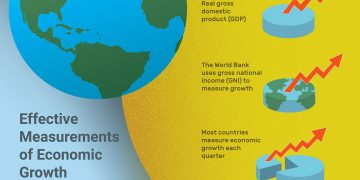The world is currently facing an energy crisis unlike any seen before. Geopolitical tensions, the war in Ukraine, supply chain disruptions, and the mounting impacts of climate change have all exacerbated the pressure on global energy systems. Europe and the U.S., two of the world’s largest energy consumers, are particularly vulnerable to these shocks, and their energy strategies must adapt to both short-term crises and long-term sustainability goals.
In the midst of this crisis, the call for a sustainable energy transition is louder than ever. As both the U.S. and Europe work to reduce their dependence on fossil fuels, shift towards renewable energy sources, and build more resilient energy systems, the question arises: how can they manage this critical transition in the face of both immediate energy challenges and long-term sustainability goals?
This article will explore how the U.S. and Europe can achieve a successful and sustainable energy transition, balancing the need to address the immediate energy crisis with the long-term goal of creating a sustainable, clean energy future.
1. The Current Energy Crisis: A Closer Look
1.1. Geopolitical and Supply Chain Disruptions
The energy crisis facing the U.S. and Europe is deeply rooted in geopolitical instability and supply chain disruptions. The Russian invasion of Ukraine has led to a dramatic rise in global energy prices, particularly natural gas and oil. In response to Russia’s actions, European nations have been working to reduce their reliance on Russian energy exports, which have long been a staple of the European energy market.
Additionally, supply chain disruptions caused by the COVID-19 pandemic and other factors have made it difficult for countries to source critical components for renewable energy infrastructure, such as solar panels, wind turbines, and batteries. These disruptions have slowed the pace of the energy transition, even as demand for cleaner energy solutions continues to rise.
1.2. Rising Energy Prices
The increased cost of energy is another pressing challenge. In Europe, many countries have seen their energy bills soar as a result of the energy crisis. For households, the impact of rising energy prices has been significant, while businesses are grappling with rising operational costs. In the U.S., while energy prices have also increased, the situation is somewhat different due to the country’s larger domestic energy production capacity.
Despite these challenges, the pressure to transition to renewable energy remains high. Energy security, climate change, and the desire to reduce reliance on fossil fuels are all motivating factors behind the push for sustainable energy solutions.
2. The Road to a Sustainable Energy Transition: Key Strategies for the U.S. and Europe
Achieving a sustainable energy transition while addressing the ongoing energy crisis requires a multi-faceted approach. The U.S. and Europe must prioritize policies and strategies that promote energy resilience, reduce dependence on fossil fuels, and accelerate the adoption of clean energy technologies.
2.1. Accelerating the Shift to Renewable Energy
The most important step in achieving a sustainable energy transition is to accelerate the shift from fossil fuels to renewable energy sources. Both the U.S. and Europe have made strides in this area, but more needs to be done to increase the share of renewables in the energy mix.
- Wind and Solar Power: Wind and solar power are at the forefront of the renewable energy revolution. In the U.S., states like Texas and California have led the way in solar and wind power development. Europe, particularly countries like Denmark and Germany, has also made significant progress in these areas. However, to achieve a sustainable transition, both regions will need to significantly increase investment in renewable energy infrastructure and ensure that power generation from wind and solar sources is reliable and scalable.
- Offshore Wind: Europe, especially the U.K. and countries in the North Sea region, has significant potential for offshore wind energy. Offshore wind farms can generate large amounts of energy while reducing the environmental impact of land-based installations. The U.S. has also begun to develop its offshore wind capacity, particularly along the East Coast, and this is expected to play a key role in future renewable energy generation.
- Energy Storage Solutions: One of the challenges with renewable energy sources like solar and wind is their intermittent nature. To ensure that renewable energy can provide a consistent and reliable power supply, both regions must invest in advanced energy storage technologies. Batteries and other forms of energy storage, such as pumped hydro storage or hydrogen, are critical to balancing supply and demand and maintaining grid stability.
2.2. Energy Efficiency and Demand Reduction
Reducing energy consumption is an essential part of the transition to a more sustainable energy future. Both the U.S. and Europe have an opportunity to improve energy efficiency across various sectors, from residential and commercial buildings to industrial processes and transportation.
- Building Efficiency: Improving the energy efficiency of buildings is one of the most cost-effective ways to reduce energy demand. In the U.S. and Europe, a large portion of energy consumption is linked to heating, cooling, and powering residential and commercial buildings. Policies that promote energy-efficient building codes, retrofitting, and the adoption of green technologies can significantly reduce energy demand.
- Industrial Efficiency: The industrial sector is another key area for improving energy efficiency. Many industrial processes, such as manufacturing and refining, are energy-intensive. Both the U.S. and Europe need to encourage industries to adopt energy-efficient technologies, such as advanced automation systems, heat recovery solutions, and low-carbon production processes.
- Smart Grids and Digital Technologies: The integration of digital technologies, such as smart meters, sensors, and data analytics, into the energy grid can help optimize energy use and reduce demand. Smart grids enable utilities to better manage energy distribution, reduce waste, and enhance grid resilience. The U.S. and Europe should continue investing in smart grid infrastructure to enable more efficient energy consumption.
2.3. Investment in Green Technologies and Innovation
To achieve a sustainable energy future, both the U.S. and Europe must continue to invest heavily in the research and development of green technologies. While wind, solar, and energy storage are critical components of the energy transition, there are other emerging technologies that could play a key role in decarbonizing the energy sector.
- Hydrogen: Hydrogen is seen as a potential game-changer in the transition to a low-carbon energy system. Green hydrogen, produced using renewable energy, could be used to decarbonize hard-to-abate sectors like heavy industry, transportation, and power generation. Both the U.S. and Europe are investing in hydrogen technologies, and continued innovation in this field will be essential for meeting long-term sustainability goals.
- Carbon Capture and Storage (CCS): Carbon capture and storage is another technology that could play a role in reducing emissions from fossil fuel use. CCS involves capturing carbon dioxide emissions from industrial processes and power plants and storing them underground. While still in the early stages of development, CCS could be an important tool in achieving net-zero emissions.
- Nuclear Energy: While controversial, nuclear energy remains a low-carbon source of electricity that can provide reliable, baseload power. The U.S. and Europe need to continue exploring the role of nuclear energy in the energy transition, particularly with the development of next-generation nuclear technologies, such as small modular reactors (SMRs).

2.4. Energy Security and Diversification of Energy Sources
Energy security has become an increasingly urgent issue, particularly in Europe, where the reliance on Russian energy imports has become a major vulnerability. To achieve a sustainable energy transition, both the U.S. and Europe must focus on diversifying their energy sources and reducing dependency on unstable or non-renewable sources.
- Diversification of Supply Chains: In addition to shifting towards renewable energy, both regions must work to diversify their sources of energy supply. This means securing reliable access to critical resources like rare earth metals (needed for wind turbines and solar panels), natural gas, and energy storage materials. The U.S. and Europe must also increase investment in local energy production to reduce reliance on energy imports from politically unstable regions.
- Strategic Reserves: Both regions should consider creating or expanding strategic energy reserves, particularly for critical resources like natural gas and oil. These reserves can help ensure energy security in times of crisis, such as geopolitical disruptions or extreme weather events, while also supporting the transition to renewable energy sources.
2.5. Collaboration and Policy Alignment
Finally, achieving a sustainable energy transition requires collaboration at both the domestic and international levels. The U.S. and Europe must work together to align their energy policies, share knowledge and best practices, and coordinate efforts to address global energy challenges.
- International Cooperation on Climate Goals: The U.S. and Europe must continue to be leaders in international efforts to address climate change. This includes supporting the goals of the Paris Agreement, contributing to global climate finance, and fostering collaboration with emerging economies on clean energy technologies.
- Policy and Regulatory Support: Governments in both regions must provide the right incentives and regulatory frameworks to promote the adoption of renewable energy, energy efficiency, and green technologies. This could include carbon pricing, subsidies for clean energy projects, and renewable energy mandates.
3. Conclusion: A Sustainable Future for Energy
The energy crisis is a complex and multifaceted challenge, but it also presents a unique opportunity for the U.S. and Europe to accelerate their energy transitions and build a more sustainable, resilient energy future. By focusing on renewable energy, energy efficiency, technological innovation, and energy security, both regions can navigate the current crisis while laying the groundwork for a cleaner, more sustainable energy system.
The transition to sustainable energy will not be easy, and it will require significant investment, policy alignment, and international cooperation. However, by embracing this transition, the U.S. and Europe can not only address immediate energy needs but also lead the way toward a more sustainable and resilient global energy system for future generations.



































